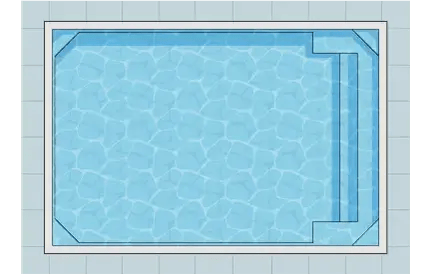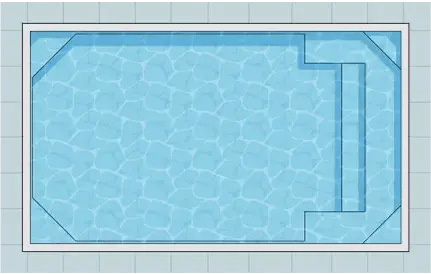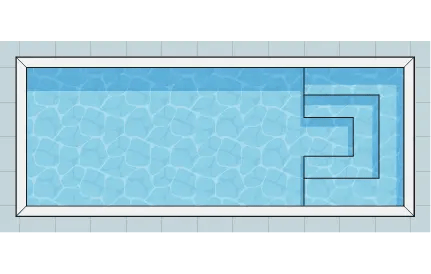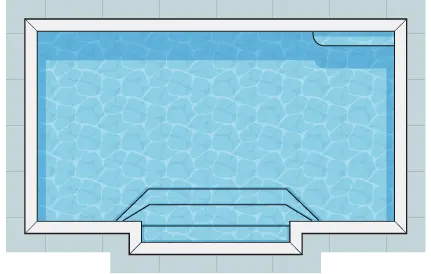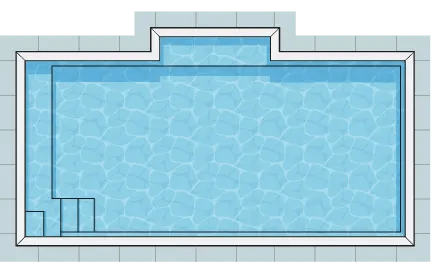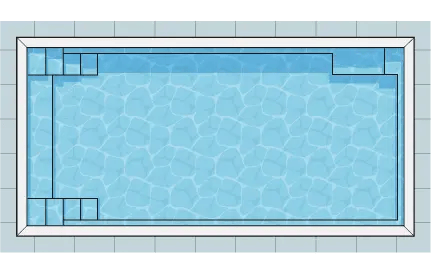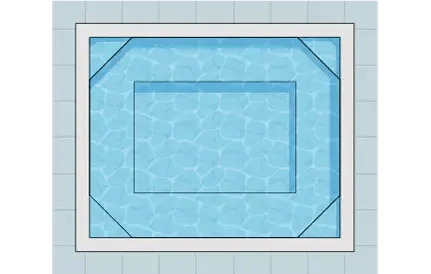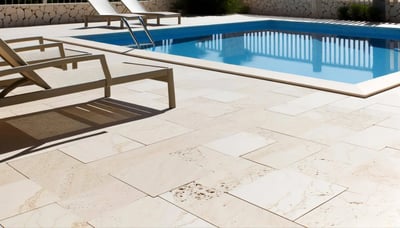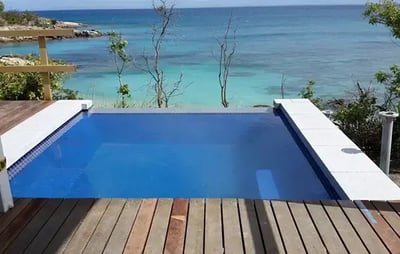With the Australian housing market experiencing high prices and interest rates on the rise, homeowners are searching for friendly and affordable ways to improve their homes. A DIY approach to a pool can seem daunting at first, but when you break it down this approach can be simple and save you thousands of dollars. In recent years precast concrete plunge pools have entered the DIY swimming pool market. Let's take a look at what they are and how they compare to a DIY fibreglass pool.
Pro Tip:
When it comes to design and aesthetics, both types of pools can achieve a beautiful look. The main difference between the pools is the installation cost. Whilst a precast concrete pool cost may seem comparable to a fibreglass pool, make sure you research the cost of a crane. A precast concrete pool is heavy so the crane cost is substantially higher.
Article Summary
|
New research shows over 3.1 million Australians these days live in a house with a swimming pool or spa, equivalent to one-in-seven Australians (14%)
Roy Morgan Market Research Company
What is a DIY Plunge Pool?
A DIY plunge pool is a cost effective solution to installing a small pool in your backyard. The DIY part of a pool simply means that you buy the fibreglass pool shell or precast concrete shell and manage the installation process yourself instead of using a traditional all in one company.
In Australia each year, roughly 25,000 new inground pools are installed. Of these inground pools, an increasing number are plunge pools. Why? There are a number of reasons for the popularity of plunge pools, here are some:
-
Backyards are becoming smaller and a plunge pool is the perfect small pool for a small backyard space
-
Plunge pools are cheaper to buy and install
-
Heating a plunge pool is cheaper than a large pool so they can be used for more months of the year
Why Choose a Fibreglass Plunge Pool?
Cost of a Crane
When it comes to a DIY pool you can either choose a fibreglass pool or a precast concrete pool. The precast concrete pool is a relatively new product on the market and is a quick and efficient way to get a concrete pool compared to the traditional poured on site concrete pool. However there is one very large problem with a concrete precast pool - the cost of the crane.
When it comes to installing a precast concrete pool, a crane is required to lift it into position, just like a fiberglass pool. However, the cost difference between the two types is significant. A 6-meter fiberglass pool weighs around 500kg, meaning a small crane would suffice. On the other hand, a 6-meter precast concrete pool weighs approximately 12,000kg, which requires a larger and more expensive crane.
Less cleaning
The last thing you want to do on weekends is remove mould/algae build up from tile grout. Fibreglass pools have a non-porous surface which prevents algae build up. This means less time cleaning your pool.
Less Chemicals
Chemicals need to be added to a pool to balance the water chemistry. However, with a fibreglass pool, fewer chemicals are needed since the smooth surface inhibits algae growth compared to a concrete pool.
Energy Efficiency
Fibreglass pools typically require less energy to maintain a comfortable water temperature. This is because the fibreglass material acts as a natural insulator, helping to reduce heating and cooling costs, which can be beneficial for both your wallet and the environment.
Smooth, Comfortable Finish
The smooth surface of fibreglass pools is gentle on the skin and won't cause abrasions or discomfort. No snagged cossies, hooray!
Precast Concrete Plunge Pools
When fibreglass pools were first introduced, they only had two colour options, causing them to be seen as inferior to concrete pools. One popular benefit of a precast concrete pool is that it can be customised with tiles like a traditional poured concrete pool. Some precast concrete plunge pools can be installed above ground and have tiles around the sides. This can make a stylish design statement in your backyard. With their sleek sharp edges a precast pool can look like a traditional custom poured concrete pool. Another advantage of a precast pool is that there are options for a round pool which are very on trend this year. Although they may not be the most practical in terms of actual swimming space, a round concrete pool does make a design statement and can add an architectural feel to your backyard.
The Weight Issue
For a small precast concrete pool the average pool will weigh approximately 7000kg. This is the biggest factor to consider when researching which DIY pool to go with.
The Crane Cost Factor
When ordering your DIY pool it's important to factor in all the parts of your pool installation. If you are using a licensed pool installer then have a conversation at the outset regarding the total costs you can expect. Always factor in costs such as soil removal and pool fencing into the total budget. A cost that is often overlooked is the crane cost.
Example of a Cost Comparison
| Pool Type | Crane Cost (Over Double Storey House) NSW |
| 6m Fibreglass Plunge Pool | $2,000 |
| 6m Precast Concrete Plunge Pool | $11, 000 |
Fibreglass Pool Crane
With a DIY fibreglass pool, the pool should be delivered on a HiAb truck which has a small crane to lift the pool to your kerb. If the pool hole has easy access then sometimes the truck's crane is able to lift the pool and place it directly into the hole, this offers a substantial cost saving.
Concrete Pool Crane
With a prefab concrete pool, due to its weight it can not be lifted from the truck by a small truck crane so you will need to have a large separate crane ready and on standby on the day of delivery to lift it from the truck and into the hole. Due to the size of crane needed to lift a pool that is at least 7,000kg, quite often you will need to factor in the cost of closing the road and paying for the traffic team. Closing a road can quickly add thousands of dollars to the crane bill.
Long-Term Costs
Fibreglass Plunge Pools
Lower Chemical Costs: Reduced chemical use translates to lower ongoing expenses.
Minimal Repairs: Fibreglass pools are less prone to cracks and leaks, leading to fewer repair costs.
Resurfacing Costs: While fibreglass pools require resurfacing over time, this cost is generally lower than major concrete pool repairs.
Concrete Plunge Pools
Long-Term Costs
Higher Chemical Costs: Increased chemical use can result in higher ongoing expenses.
Repair Costs: Concrete pools are prone to cracking, which can lead to costly repairs over time.
Resurfacing Costs: Concrete pools may need to be resurfaced every 10-15 years, which can be expensive.
Conclusion
Creating your dream pool through a DIY option offers a budget-friendly solution. However when choosing whether to opt for a fibreglass pool or a precast concrete pool you need to consider the hidden costs that aren’t always thought about. The weight of a precast concrete pool is a big factor in the increased cost of this type of DIY pool. If you want your dream pool but don’t want any nasty surprises halfway through, take time to research all the costs.







